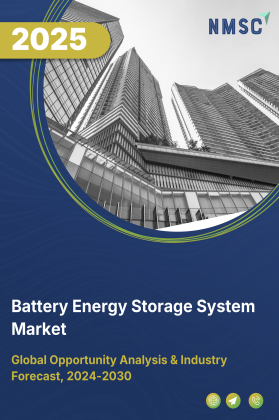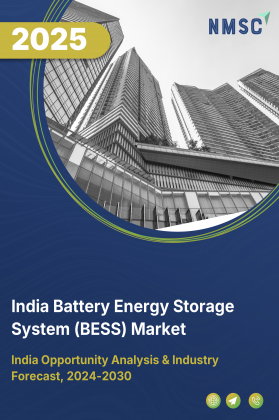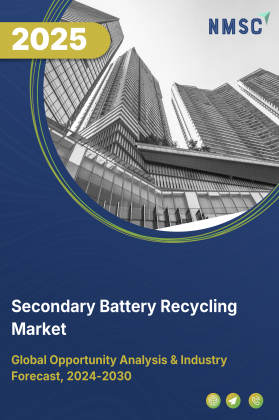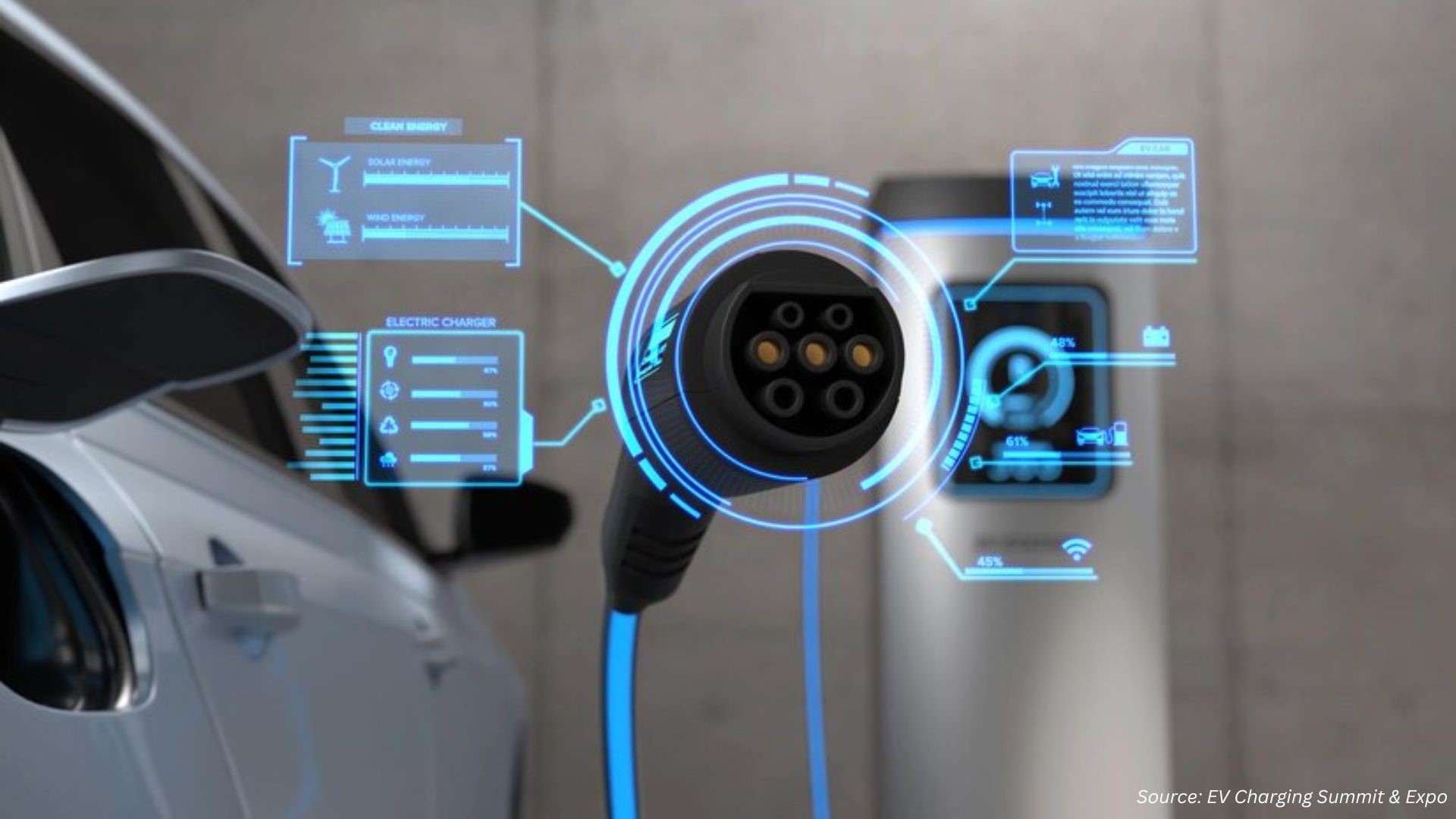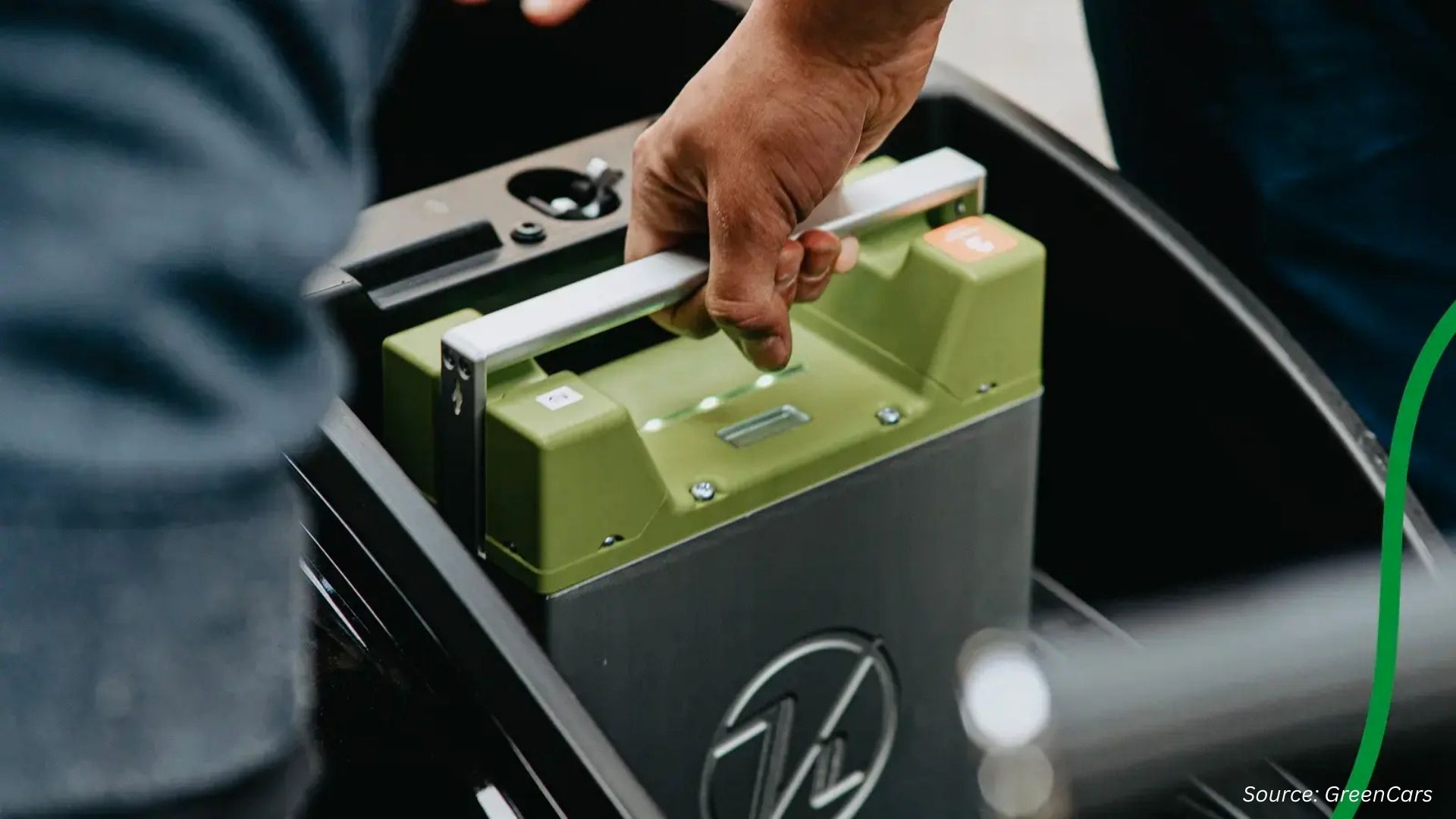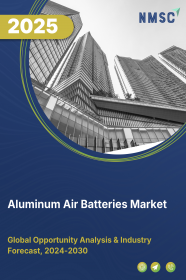
Aluminum-air Battery Market by Type (Primary Aluminum Air Batteries, and Secondary Aluminum Air Batteries), by Electrolyte Solution (Water-based, Potassium Hydroxide, and Others), by Voltage (Low (<12V), Medium (12−36V), and High (>36V)), by Application (Telecom Towers, Hospitals, Automotive, Military, Consumer Electronics, Aerospace, and Others), and by End User (Residential, Industrial, Commercial, Utilities, and Others)- Global Opportunity Analysis and Industry Forecast 2024-2030
Aluminum-Air Batteries Market Overview:
The global Aluminum-Air Batteries Market size was valued at USD 10.30 billion in 2023 and is predicted to reach USD 14.13 billion by 2030 with a CAGR of 4.6% from 2024-2030.
An aluminum-air battery is a type of primary battery that utilizes an electrochemical reaction between the aluminum anode and oxygen from the air to generate electricity. The battery holds promise for achieving high-energy-density levels, making it an attractive option for a range of applications including in vehicles, stationary energy storage, and portable electronics. The aluminum-air battery is an environmentally friendly alternative to traditional lead-acid and lithium-ion batteries as it does not contain any toxic materials. Aluminum-air batteries hold the transformative potential to revolutionize energy storage and are anticipated to play a pivotal role in enhancing global energy efficiency and contributing to substantial reductions in carbon emissions in the future.
Market Dynamics and Trends
The rapidly growing popularity of electric vehicles across the globe is driving the growth of the aluminum-air battery market. Aluminum-air battery is considered to be the best replacement for lithium-ion batteries used in EVs due to their high theoretical energy density and increased driving range. As the automotive industry experiences a rapid shift towards sustainable and electric mobility, the market is poised to play a pivotal role in meeting the energy storage demands of modern electric vehicles.
Moreover, the growing environmental concerns such as carbon and greenhouse gas emissions along with stringent government regulations and policies for environmental protection are further driving the growth of the aluminum-air battery market. Aluminum-air batteries do not contain toxins, making them the most suitable substitute for conventional lithium-ion batteries. The eco-friendly nature of aluminum-air batteries positions them as a highly suitable alternative to traditional lithium-ion batteries, aligning with the global efforts to adopt cleaner and sustainable energy solutions.
Furthermore, the growing emphasis on renewable energy sources and the demand for more efficient energy storage solutions are driving the adoption of aluminum-air batteries. These batteries are recognized as highly efficient devices for energy storage. Their effectiveness in storing energy makes them a favorable choice for sustainable and reliable solutions for the ever-expanding renewable energy sector.
However, the production costs of aluminum air batteries remain relatively high, primarily due to the use of pure aluminum and the materials required for constructing efficient air cathodes, hindering widespread affordability and adoption.
On the contrary, increasing utilization of Al-Air batteries by power grids to serve remote areas due to low availability of power is expected to create ample opportunities for the market in the coming years. Al-Air batteries, with their high energy density and potential for extended runtime, make them particularly suitable for off-grid applications. By harnessing these batteries, power grids can efficiently store and deliver energy to remote locations, contributing to improved access and reliability.
Market Segmentations and Scope of the Study
The aluminum-air batteries market report is segmented on the basis of type, voltage, electrolyte, application, end-users, and region. On the basis of type, the market is divided into primary aluminum-air battery and mechanical rechargeable secondary aluminum-air battery. On the basis of voltage, the market is segmented into under 0.7 v0.7- 1.2 v, and others. On the basis of electrolyte, the market is divided into water-based, potassium hydroxide, and others. On the basis of application, the market is classified into telecom, hospitals, automotive, military, consumer electronics, aerospace, and others. On the basis of end-users, the market is segmented into residential, industrial, commercial, utilities, and others. Regional breakdown and analysis of each of the aforesaid segments include regions comprising of North America, Europe, Asia-Pacific, and RoW.
Geographical Analysis
Asia Pacific holds the dominant share of the aluminum-air batteries market and is expected to continue its dominance during the forecast period. This is primarily due to the rapid expansion of the automotive industry in the region, coupled with supportive government policies aimed at promoting environmentally friendly vehicles utilizing aluminum-air batteries. According to the International Energy Agency, China sold 13.8 million electric vehicles in 2022, registering 60% of global electric vehicle (EVs) sales. This rise in the demand for EVs is driven by the stringent government regulations focusing on sustainability. This strong push for eco-friendly transportation is driving the adoption of aluminum-air batteries, positioning Asia Pacific as a key player in the growth of the global market.
Moreover, the growth of the aluminum-air battery market in the Asia-Pacific region is being further propelled by the presence of key players such as Phingrey, China Dynamics, and Xinjiang Joinworld Co. Ltd. These companies play a crucial role in driving advancements, innovation, and market expansion within the aluminum-air battery sector in Asia-Pacific. For instance, in January 2023, Phinergy collaborated with Tata Motors to develop a prototype of Tata’s electric vehicle that incorporates Phinergy's aluminum-air battery technology. The partnership was aimed toward a notable advancement in the automotive industry, showcasing the integration of cutting-edge energy storage solutions into electric vehicles for sustainable and efficient electric transportation.
On the other hand, North America is expected to show a steady rise in the aluminum-air battery market due to the growing adoption of electric vehicles in countries such as the U.S. and Canada. As per the latest report published by the International Energy Agency, 1.6 million electric vehicles (EVs) were sold in the U.S. in 2023, marking a substantial increase from the 1 million units sold in 2022. This surge in sales is driven by the shift in consumer preferences and a heightened awareness of the environmental benefits, reflecting a growing trend toward sustainable and eco-friendly transportation options.
Moreover, the increasing focus on renewable energy sources and the need for more efficient energy storage solutions is encouraging the adoption of aluminum-air batteries in this region. According to the most recent report from the International Energy Agency, the United States invested a substantial USD 97 billion towards the clean and renewable energy sector in 2022. This surge in investment in renewable energy in North America is driven by a collective effort to transition towards cleaner and more sustainable energy sources. Governments, businesses, and individuals are recognizing the environmental and economic benefits of renewable energy, leading to increased funding for clean energy projects.
Competitive Landscape
Various market players operating in the aluminum-air batteries industry include Phinergy, Fuji Pigment, Alcoa, De Nora Tech, Inc., ACTXE Limited, Xinjiang Joinworld Co., Ltd., Mingtai Chemical Co., Ltd., Renault-Nissan, Zhejiang Geely Holding Group Co., Ltd, Anyuan Solutions Co., Limited, RiAlAiR Limited, Aqua Power Systems, Inc., Log 9 Materials, AlumaPower Corporation, Albufera Energy Storage, and others. These market players are adopting various strategies, such as product launches and partnerships, to remain dominant in the market.
For instance, in July 2022, Phinergy partnered with Hindalco, a metals flagship company. The partnership was aimed at R&D and pilot production of aluminum plates for aluminum-air batteries and recycling of aluminum after the usage in these batteries.
Furthermore, in June 2022, Alcoa invested USD 51 million to boost aluminum production at Mosjøen Smelter in Norway. Through this investment, the company aims to increase the production of aluminum for numerous functions including the production of aluminum-air batteries.
Key Benefits
-
The report provides quantitative analysis and estimations of aluminum-air batteries market from 2024 to 2030, which assists in identifying the prevailing market opportunities.
-
The study comprises a deep-dive analysis of the aluminum-air batteries market including the current and future trends to depict prevalent investment pockets in the market.
-
Information related to key drivers, restraints, and opportunities and their impact on the aluminum-air batteries market is provided in the report.
-
A competitive analysis of the players, along with their market share is provided in the report.
-
SWOT analysis and Porter's Five Forces model are elaborated in the study.
-
Value chain analysis in the market study provides a clear picture of the roles of stakeholders.
Aluminum-Air Batteries Market Key Segments
By Type
-
Primary Aluminum Air Batteries
-
Secondary Aluminum Air Batteries
By Electrolyte Solution
-
Water-based
-
Potassium Hydroxide
-
Others
By Voltage
-
Low (<12V)
-
Medium (12−36V)
-
High (>36V)
By Application
-
Telecom Towers
-
Hospitals
-
Automotive
-
Military
-
Consumer Electronics
-
Aerospace
-
Others
By End User
-
Residential
-
Industrial
-
Commercial
-
Utilities
-
Others
By Region
-
North America
-
The U.S.
-
Canada
-
Mexico
-
-
Europe
-
The UK
-
Germany
-
France
-
Italy
-
Spain
-
Denmark
-
Netherlands
-
Finland
-
Sweden
-
Norway
-
Russia
-
Rest of Europe
-
-
Asia Pacific
-
China
-
Japan
-
India
-
South Korea
-
Australia
-
Indonesia
-
Singapore
-
Taiwan
-
Thailand
-
Rest of Asia Pacific
-
-
RoW
-
Latin America
-
Middle East
-
Africa
-
Key Players
-
Phinergy
-
Fuji Pigment
-
Alcoa
-
De Nora Tech, Inc.
-
ACTXE Limited
-
Xinjiang Joinworld Co., Ltd.
-
Mingtai Chemical Co., Ltd.
-
Renault-Nissan
-
Zhejiang Geely Holding Group Co., Ltd
-
Anyuan Solutions Co., Limited
-
RiAlAiR Limited
-
Aqua Power Systems, Inc.
-
Log 9 Materials
-
AlumaPower Corporation
-
Albufera Energy Storage
REPORT SCOPE AND SEGMENTATION:
|
Parameters |
Details |
|
Market Size in 2023 |
USD 10.30 Billion |
|
Revenue Forecast in 2030 |
USD 14.13 Billion |
|
Growth Rate |
CAGR of 4.6% from 2024 to 2030 |
|
Analysis Period |
2023–2030 |
|
Base Year Considered |
2023 |
|
Forecast Period |
2024–2030 |
|
Market Size Estimation |
Billion (USD) |
|
Growth Factors |
|
|
Countries Covered |
28 |
|
Companies Profiled |
15 |
|
Market Share |
Available for 10 companies |
|
Customization Scope |
Free customization (equivalent up to 80 working hours of analysts) after purchase. Addition or alteration to country, regional, and segment scope. |
|
Pricing and Purchase Options |
Avail customized purchase options to meet your exact research needs. |




















 Speak to Our Analyst
Speak to Our Analyst



